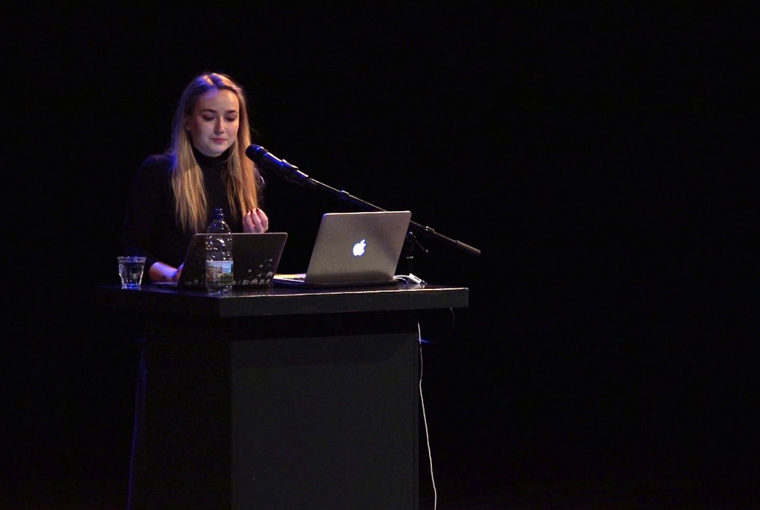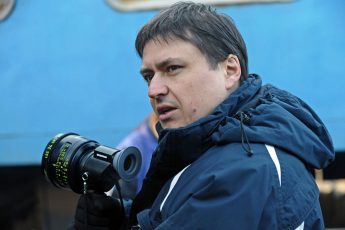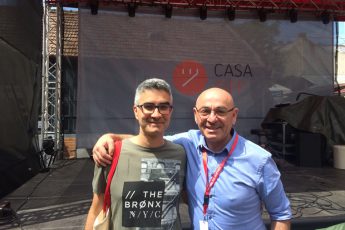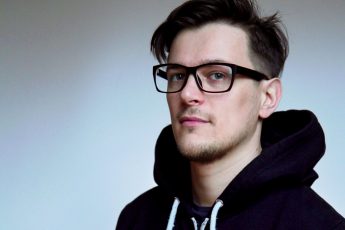
We met researcher, media artist and filmmaker Alexandra Anikina to speak to her about her understanding of experimental cinema. Anikina elaborates on her concept of ‘procedural films’ and discusses her recent short “Data Field”, which screened at the Moscow International Experimental Film Festival 2021.
How would you define your approach to experimental cinema and to its future? You refer to experimental cinema in terms of the concepts of algorithmic cinema and procedural films. Could you elaborate on your understanding of these terms?
I would say that I’m an artist-researcher making essay films, lecture-performances and media art. My approach to art has always been defined by technology, rather than by fine art theories: I’ve worked as a commercial photographer before studying photography and experimental film, and then I completed a PhD in Media, Communications and Cultural Studies at Goldsmiths. I can broadly define my interests at the moment as visual algorithmic culture, post-socialist experience and techno-animism.
Experimental film is a way to explore how technologically mediated images participate in processes of knowledge construction, how affect is produced. It is also well-suited for raising questions about the politics of the image: how the image is caught in the commercial and state infrastructures, what role it plays in late capitalist digital culture, how images are used to conceal certain power processes.
I came up with the term ‘procedural films’ to talk about moving image works that are generated live by algorithmic procedures. Another popular term for this is ‘live simulations’. Procedural films that I make in collaboration with programmers are made with the Unity game engine: essentially, they are games that play themselves, letting the image move within a certain set of constraints. There is a particular kind of perception that comes with images that seem to move on their own: as a viewer, you have to deal with the perception of agency and otherness. Early cinema theorists explored cinema’s autonomy as a type of consciousness almost, for example, take Jean Epstein’s ‘metal brain’ and Dziga Vertov’s ‘kino-eye’. This, as well as structural-materialist film, was a big inspiration for me in the beginning. But now I’m more interested in the ‘otherness’ of the moving image and its capacity to ‘other’ things and people. I think that agential positions often have to be renegotiated in a very nuanced way.
In my work (e.g. in Non-Player Character from 2020) I have paid particular attention to the idea of automated/autonomous movement as creating an affective space for the viewer to contemplate their own position as a viewer. This is where this kind of thinking also connects with decolonial theory and animal studies, which have both dealt with ‘othering’ for a long time. For example, the way we look at animals in aquariums and zoos holds a lot of interest for me as a contested terrain of ‘looking as power’, and the possibilities for agency when one is being looked at. In relation to algorithms, I’m particularly interested in processes of alienation and agency that techno-mediated images facilitate.
Can you explain the idea of “Data Fields”, which has lent your recent short its title?
My film Data Field is the first from a trilogy of film essays that focus on Soviet and post-Soviet media technologies acting as media mythologies. It’s a big topic that would probably take a whole other interview to unpack. I started this film as an effort to understand the Soviet past and my own family history, but it ended up as a much bigger investigation. I used various artifacts and visuals of Soviet modernity, as well as my own family history, to ask questions such as ‘how was Soviet modernity distinct from the Western one?’, ‘how can I think about the Soviet past?’ and ‘what remains of these ideas that is still persistent in contemporary Russian politics today?’
Some people asked me what a ‘data field’ is, but the way I think about it is exactly what it sounds like. To start with, ‘data field’ is a somewhat bureaucratic name for a cell in an Excel spreadsheet – and this is an image that features in the second film, which I’m making right now. But ‘data field’ is also reminiscent of ‘noosphere’, a concept developed by Pierre Teilhard de Chardin, Édouard Le Roy and Vladimir Vernadsky. ‘Noosphere’ implies that human cognition produces something comparable to a biosphere, something that alters whatever it deals with and that is more than just a sum of all the knowledge that is available. ‘Data field’, on the other hand, doesn’t put humans at the forefront, but rather points to the overwhelming primacy of informational infrastructures in which we exist. We all live in multiple ‘data fields’ of different kinds. And finally, it is also a very straightforward pun on the ‘field’ as a persistent visual metaphor for a place where a Russian soul can feel at home – if you look up any works by 19-century painter Ivan Shishkin, you will immediately understand my reference.
Can you tell us more about the links between Russian cosmism and digitality in your films, and in Data Field in particular?
I’m very intrigued by Russian cosmism, but I’m not happy with how progress-oriented its ideas were. So I’m more inclined to explore cosmism’s links to Russian folklore, to the folktale narratives about death and transgression, and to the inclusion of ancestors in the equation.
I would also not attribute most of the ideas in Data Field to cosmism – it’s just a part of a larger narrative. Posthumanist and materialist theory were more of an inspiration for thinking about the house, the meteorite, the forest, and the mausoleum/museum as non-human characters of the film. I’m always curious about how history replays itself in the material traces of things and people. Somehow it goes beyond the idea of memory, beyond nostalgia, and it is more about how exactly history is being reanimated in the present and how the confrontation with these objects is negotiated. It also has to do with the fact that many traumas of Soviet history have still not been acknowledged properly – and, therefore, healed – in official discourse. The responsibility then falls on private histories, including my own family’s, to reflect on the paradoxes of these locations, and on the complex temporalities that they created.
What makes your film and the media you use ritualistic?
This is my recent take on methods used for making Data Field: treating the process of making images anthropologically, as a particular kind of filmic-algorithmic techno-animism, a ritual that is enacted in the processes of visualizing. The ritual is also about crossing borders between recorded images and virtual images. As an operator, I am actively moving the camera through the cemetery where my great-grandparents rest, but also producing algorithmic images, models, simulations, and maps.
The progression through the sequence of locations-characters in the film is also an act that allows me to discover my own idea of the Soviet past. From the field near the village house that my great-grandfather built in 1918, to the local museum, to the images of the temporary, wooden mausoleum of Lenin, to the architectural ruins of socialism in contemporary Moscow, through to 1970s science fiction, I tried to find weird gaps and rifts in which ideas of history were being renegotiated in a particular way. Maya Deren’s work and the book of my doctoral supervisor Rachel Moore Savage Theory: Cinema as Modern Magic have been a big inspiration for me while developing this line of thought. The image-space can enact the space of utopia, but not necessarily in obvious ways. In the last part of the trilogy, I hope to develop this more in relation to algorithmic visualization and modelling.
What did you want to say about Soviet history? In Data Field and in other films such as Ostrannenie or How to Operate as a Human Artist or the Antichton, you talk about the relationship between geography and the digital turn, but also about Soviet specificities (for example in relation to Shklovsky’s concept of ‘estrangement’).
The body of work I’m developing on the post-Soviet experience is not always directly connected to my interests in digital visual culture. For example, Data Field has no intersections with my work on procedural films. But in a larger framework, when I’m considering media technologies in contemporary Russia, I’m thinking about certain Soviet cosmotechnics, approaches to technology that don’t always replicate Western ones. Acknowledging this is an epistemic shift that is similar to the Western decolonial turn towards previously marginalized histories and knowledge and away from imperialist narratives.
But what is more important to me, is that Soviet history (in the form of the histories of my grandparents and my family) as well as post-socialist experiences in general are part of my identity and thus interesting for me as someone who thinks a lot about how images operate in various techno-cultural conditions. The books from my childhood, the school I went to, or my upbringing more generally had more to do with Soviet archetypes than with 1990s Russian culture, which had had to embrace and digest capitalism. So it is obviously a source of many cultural inspirations and standpoints. In the second film of the trilogy, the one I’m developing now, I will be looking at Soviet visual tropes as they persist in contemporary narratives, at Soviet cybernetics and at women’s history of computing. I’m very excited to delve into this.
Thank you for the interview.




Leave a Comment